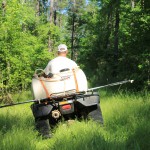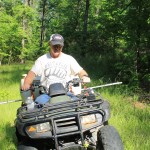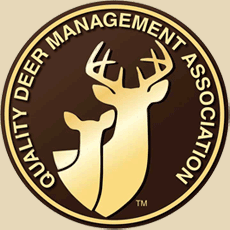As the spring rolls around, many farmers, hunters and land managers across South Carolina, North Carolina and Georgia are getting their early season food plots in the ground.
While most of this area has a prolonged autumn, early and late plots can often overlap and produce good quality food. This also can confuse some things for hunters and land managers. With abundant browse for deer to choose from planting the right crops can make all of the difference.
When deciding on a food plot, the first step of the process is developing a good plan. Too many hunters overlook this aspect and just go buy something and put it out in hopes it will grow and attract deer to their plot. However, by taking the time to develop a plan, will be much more beneficial to your deer herd and to your wallet. It’s a better use of your money and time to develop a good plan. Fortunately there are many resources out there than can help you in putting a good plan together.
Many private companies offer these services, a quick search of the web will give a list of qualified wildlife biologist’s, and certified wildlife biologists and foresters in your area. But there are also services offered by the United States Department of Agriculture that are many times free for the user. The Natural Resources Conservation Services (NRCS) branch of the USDA will assist you in developing an overall management plan for your property. Every county in the country has a NRCS representative and their contact information can be found at www.nrcs.usda.gov.

A boom sprayer such as this will cover a larger area and still allow good access through your areas.
Once a plan is established now comes the process of implementation. To make this as simple as I possibly can. I will use an example I am currently in the process of implementing. After meeting with my local NRCS representative, we developed a three year plan to get the property into the condition I was looking for. This alone was surprising, however it made sense that a good management system takes time, and taking your time and doing it correctly is important. To give an overview, this land consists of planted pines in three different age classes. From 30 years old, down to 15 years old. With significant hardwood drainages and bottom lands as well that dissect through the property. This being the case and managing the timber investment as well, we have few open areas to plant. There are three old logging decks of about ¾ to 1 acre each, and the open lanes where subsequent thinning took place a few years ago.
Our plan involves three basic steps. 1. Identify where we want to plant. 2. Prepare these areas for planting and 3. Plant and maintain.
With land in the Carolina’s we have a vermin known as the sweet gum tree Liquidambar styraciflua. If you don’t have sweet gum’s where you live consider yourself blessed. In my experience there is no other plant that can take over and consume open ground like it. It is fast growing and as a communal plant will throw many stalks from the same root system. We have spent thousands of hours mowing, and cutting the sweet gums from our open areas and shooting lanes.
After doing phase one and identifying the areas, we jumped into phase 2 of our plan, beginning to prepare the areas we want to plant. These were marked identified as being near current stands, and other travel routes we wanted to prevent the sweet gums from invading. Other areas were left alone to provide cover and natural browse. Our plan is to rid these areas of the sweet gums permanently, or as permanently as we possibly can for an intrusive species.
Spraying is the best and most efficient manner of killing and ridding an area of these plants. Some of the areas we had a good stand of grasses established and we didn’t want to kill those grasses. So selecting the proper herbicide was critical. This is where having a good plan with the aid of a biologist assist. We decided to use 2, 4-D as our herbicide. When mixed correctly, 2,4-D will kill all broadleaf vegetation and not harm the grasses already established. The hope is this will kill all of the sweet gums in the targeted areas and begin the process of totally killing them off. Our other option was a growing season burn, however with the planted pines so close to maturity, we didn’t want to risk damaging or killing them with a burn. Once harvested, we will be burning the cut over to prevent the sweet gum plague.
Our herbicide takes two weeks to fully kill the plant root. So we are anxious to see how this plays out. But I can already see from a cost analysis, (assuming this works and all of the sprayed areas actually die off). It was a significant financial savings. Last season we spent in excess of $400 in fuel to mow and try and maintain the sweet gums only to have them bush out from the stumps we mowed. The cost of 2.5 gallons of 2,4-D was $80.00 the fuel was negligible since we used a sprayer attached to an ATV. Plus, we won’t have to spray again.
After this part of the process is complete and we have the gums gone, we will follow up with a planting in these areas. (More on that in a few weeks).
I will say that, having a defined plan takes a lot of the stress out of managing the land. A written plan with goals makes it easier to manage and mostly takes all of the guess work out of the process.
A word of caution: Many herbicides are very toxic. Please read all lables and warnings prior to purchasing and applying. Wear rubber gloves when handling and never spray on a windy day. The wind drift can be a major issue – from killing plants not intended to the wind carrying the spray mist back onto you while you are applying. Herbicides are a great tool, but they can also be dangerous. Follow all warnings and safety precautions when handling.





